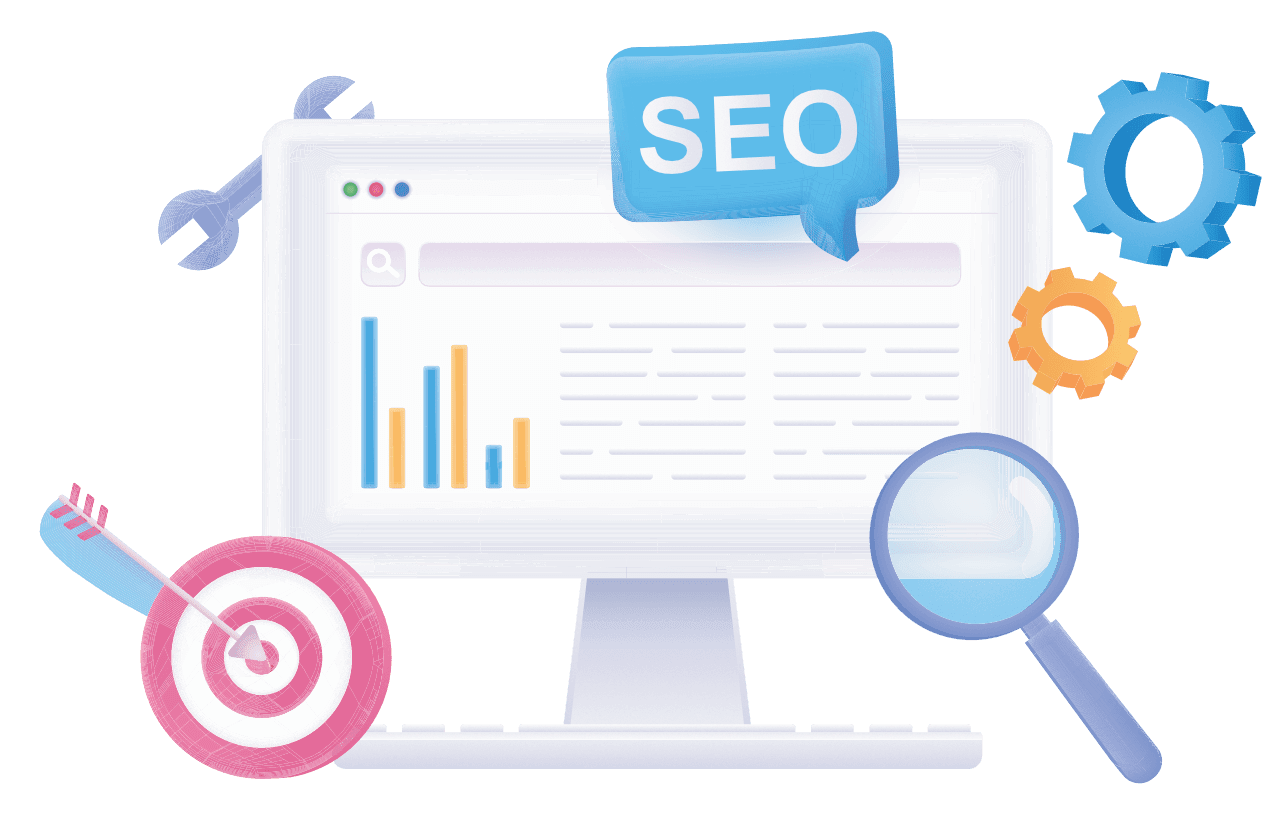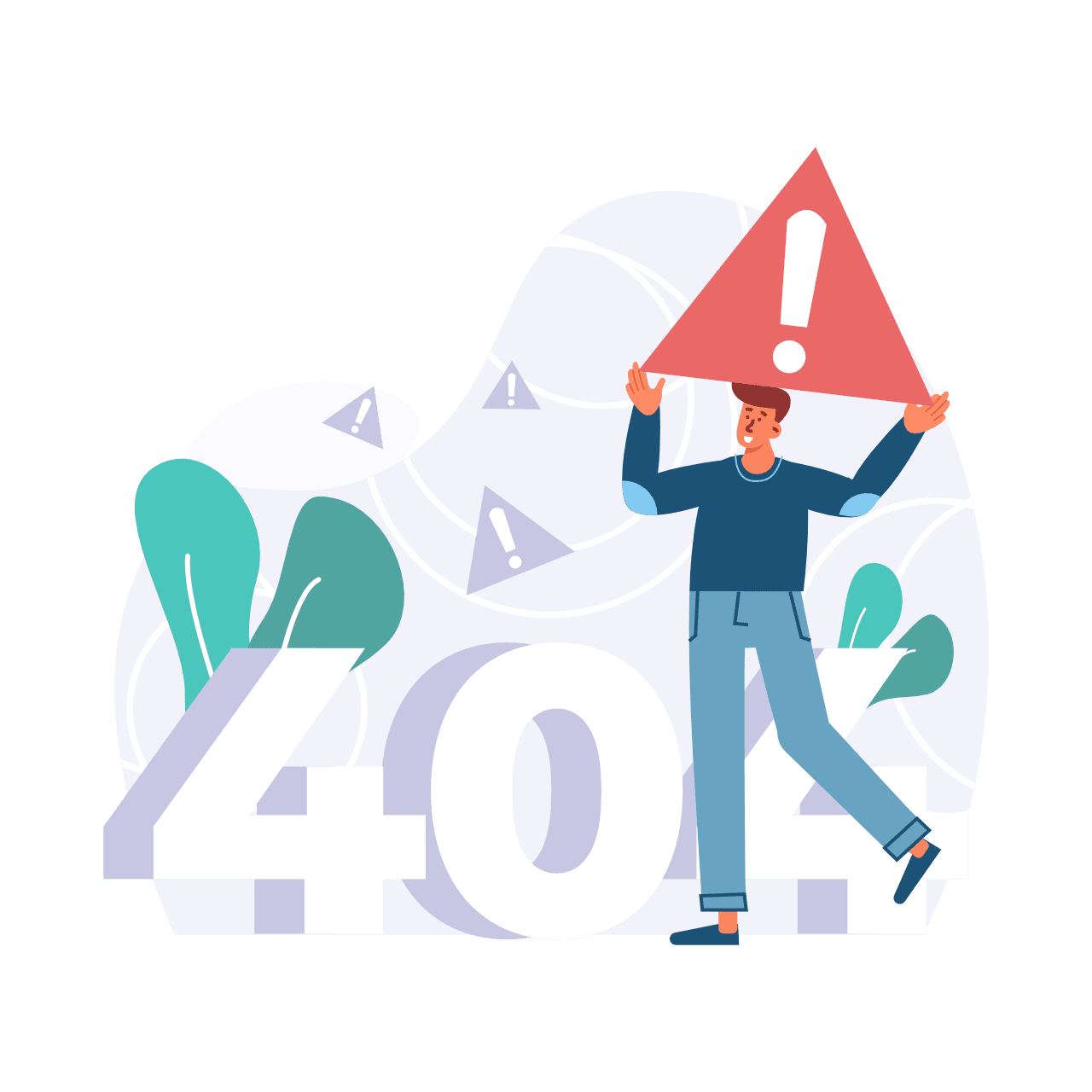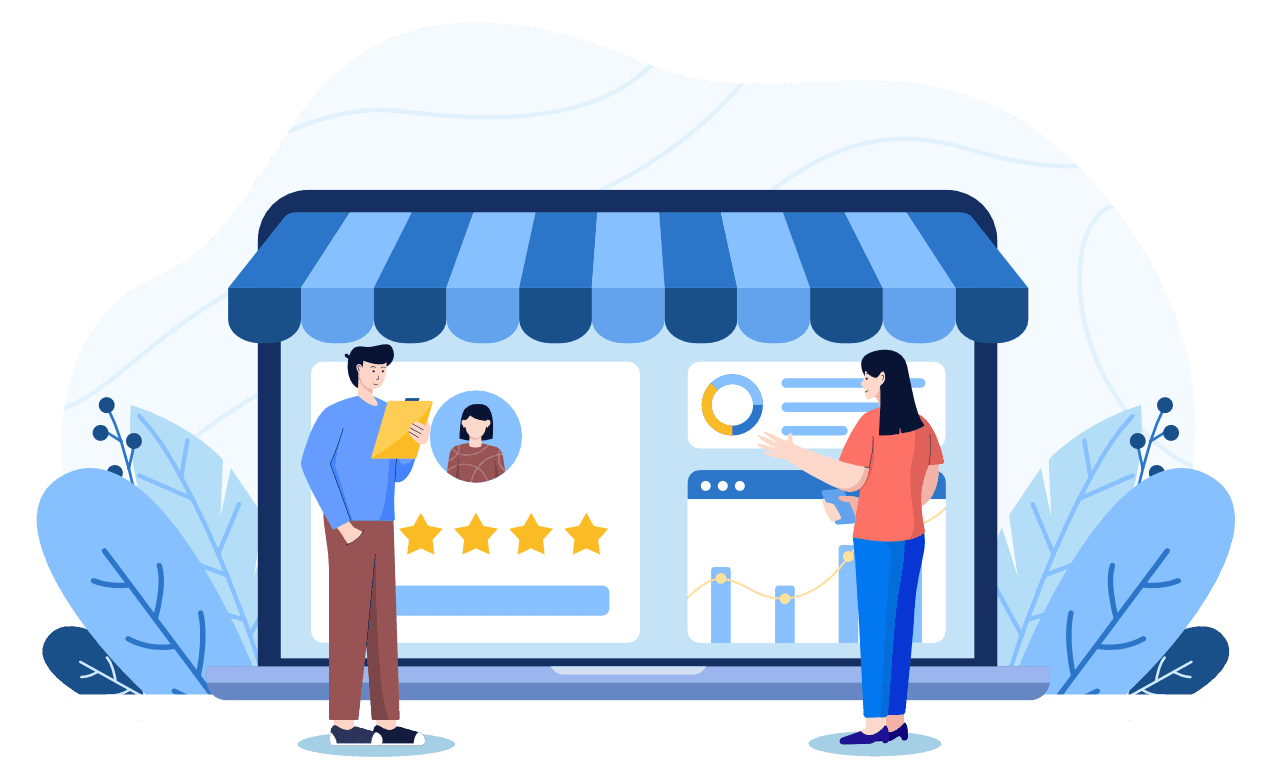What is the first thing you do when you need new marketing ideas? What about when you decide it's time to find a new accounting software? Or even when you notice a flat tire in the car? My guess is your turn to Google.
But did you know that 82% of B2B buyers also agree that content is important to achieving their own marketing goals? Faced with a problem, challenge, or even achieving a goal, they simply google it. And so, it's a cold, harsh truth that without at least some presence on Google, your business faces a digital uphill battle.
You may be asking yourself what the different SEO techniques you can use to gain a competitive advantage in the search rankings are? In this article, we'll provide unique SEO strategies that are often underutilized by most businesses.
Keyword Research
Keyword Research
For any online campaign, the SEO game comes first. Although every business is running online implements it, not all succeed. The sole reason behind this is finding inadequate keywords. This is where it starts to affect the business and Google rankings negatively. The lack of keywords is a major drawback to website rankings. Here is an underutilized SEO strategy to follow:
- Always use Suggest Keywords provided by Google. These keywords tell everything about what people search. Using these words will surely churn the best results for the e-commerce website.
- Keyword tools can be used as well to divert the organic traffic on the website. However, it is a must to determine the keyword volume before selecting it.
- Never choose the same keywords blindly chosen by the competitor. There are chances that they have higher domain authority, and those keywords work only for them.
Onsite Optimization
Onsite Optimization
Onsite optimization focuses on making your website accessible to crawlers so that they can properly index your web pages and return relevant results in the SERPs. It also looks at the overall performance of your site. In general, better-performing sites rank higher. Therefore, content should be relevant and accessible on all platforms. In addition, website performance should be optimized for speed. This includes using meta tags and schema markup.
Onsite optimization is an essential part of SEO. It improves the site's visibility to crawlers, which are the spiders that index web pages for SERPs. Furthermore, it also ensures that the site is user-friendly, accessible, and functional across multiple platforms. The most important aspect of onsite optimization is that it's completely within the site owner's control. If the entire process is implemented properly, you can expect to achieve higher rankings.
"How-To" Guides
"How-To" Guides
In the information economy, valuable content reigns supreme. One of the best ways of boosting your on-page SEO is by writing service-related posts that are helpful to your audience. A prototypical example of this is "How-To-Guides." From indoor plumbing to graphic design, providing niche-relevant content in a step-by-step format is a sure way to cement trust.
At the peril of belaboring the point, this is something I want to emphasize: search engines only care about value. All of the SEO-related metrics the search algorithm takes into account are indirect measures of the value you offer to your customers.
Let's take backlinks as an example.
Backlinks: External links bringing visitors from other sites to yours. They are heavily taken into account in Google's search ranking.
Why does Google care about backlinks?
Why does Google care about backlinks?
Think about what happens when you stumble on some piece of content (i.e., an article, a guide, etc.) that you find valuable. You first consume the content and determine it was worth reading. Having noticed its usefulness, you will naturally be inclined to share it. Perhaps you Tweet a link to it or mention it on your personal blog. This will allow many more people to discover it and share it themselves. Had you not found the information interesting or useful, you would not have shared the article.
From this point of view, it makes sense that backlinks are a measure of value. It's the same reason why Youtube videos go viral: they provide value in some way, shape, or form (entertainment, educational, or otherwise). Similarly, by writing valuable content in the form of How-To-Guides that people genuinely engage with, you can maximize time-on-site and indirectly let Google know that you are the real deal!
Link Building
Link Building
Link building refers to the marketing efforts to get links from other websites to your website. It's seen as one of the most powerful tools to achieve higher rankings for your site in search engines. If a lot of high-quality links lead to a certain page, search engines will consider it a popular or meaningful article, and, therefore, they'll rank it higher.
Publish Link-Worthy Content
Publish Link-Worthy Content
You must create content that people want to build links to. Link-worthy content has broad appeal and most likely sits at the top of the marketing funnel.
Most editors want to link to pages relevant to their audience, so the more relevant your page is to their audience, the higher the likelihood they will link to it. Link-worthy content is also educational and informational. It solves a common problem or answers common questions an audience might have. However, many SEO experts build link-worthy content by answering common queries.
That is to say, to gain backlinks, not only does your content have to answer questions and solve problems, but it also has to do it in a unique way.
That is to say, to gain backlinks, not only does your content have to answer questions and solve problems, but it also has to do it in a unique way.
Examples of link-worthy content include:
- How-to articles.
- Data and trends.
- Research that benefits your industry.
- Educational content.
- Entertainment.
- Inspirational content.
- Evergreen content.
If your strategy is to create more link-worthy content, you could audit your existing content to understand where you have gaps. Then, by going through the different tactics listed above, you can plan which content to start with and how much you'll need.
Outreach
Outreach
Outreach is the act of asking a site for a backlink. When you create link-worthy content, it's essential to share that content with sites you think would benefit from it. Gaining a backlink from high-authority sites is one way to tell Google that your site is an authority on a subject.
These backlinks act as "votes of confidence" from one site to another. Additionally, backlinks from different sites can help expand your target audience, bringing new potential customers to your website. Often, outreach consists of SEO specialists sending articles to a site editor explaining why they would benefit from their article.
However, there are many different tactics that outreach can accomplish, including:
- Press releases to obtain links from relevant sites.
- Promote new content.
- Seek links in existing content.
- Fix unlinked mentions.
Outreach can help forge professional relationships between SEOs and site editors.
While outreach may seem like a straightforward practice, there are outreach best practices that you should be aware of:
- Personalize all your outreach. You don't want to send generic messages.
- Keep it short and to the point. Site editors don't have much time to scroll through a long email.
- Explain why linking to your site or article is beneficial for them.
- Provide the anchor text for them. The easier you make it on them, the better.
Thought Leadership
Thought Leadership
A thought leader is someone in an industry who is considered an expert. They consistently publish new content and bring up new ideas concerning their industry. As a result, many people are likely to trust them and use their content as proof. So as you can see, being a thought leader in your industry can have many benefits.
Thought leadership content can also help your rankings on Google. The more people that point toward your content as a resource, the more Google will look at you as an authority. Google wants to serve its users helpful content, and thought leadership content is right up that alley.
To be successful a successful thought leader, consider the following tactics:
- Guest blogging on relevant sites.
- Posting answers on Q+A sites.
- Creating content on social media.
- Creating online classes or certifications.
- Updating readers on the news in the industry.
- Hosting a webinar or a podcast.
Remember that thought leadership starts with original research, building a solid presence, and keeping up-to-date on industry news.
Technical SEO
Technical SEO
Technical SEO is a set of website and server optimizations that make your site easier for crawlers and website visitors to understand and use. Optimizing for technical SEO can help your business rank higher in search results because you offer an exceptional user experience (UX) and high-quality content.
Decrease site load time (desktop and mobile)
Decrease site load time (desktop and mobile)
Have you ever visited a website that took too long to load? Consequently, have you ever left a website because it was taking too long to load? You're definitely not alone. Over 40% of users have abandoned a site because of the slow time it took to propagate, and that number is only growing with time.
Therefore, site load time is extremely important to your success for a few reasons:
- Users are much more likely to abandon your site if it doesn't load in under three seconds on mobile and under two seconds on desktop.
- Part of Google's ranking factor takes load speed into consideration.
- If users are leaving your site, they're clicking the back button — and that counts as an increase in your site's bounce rate, which Google also uses as a ranking factor.
Increasing your site speed can be done in a variety of different ways.
The most common culprits of slow speed are large images and rich files that may — themselves — take way too long to load. Compressing these images and optimizing these files can drastically help improve your site's load time.
In addition, browser caching, utilizing CDNs, removing unused scripts & files, and decreasing HTTP requests also contribute to rectifying this common issue.
After going through the punch list, you can usually see your site's speed increase almost immediately. To effectively test it, try going to a website like www.webpagetest.org, and submit your site before (to see exactly what you need to improve) and then after (to see the results of what you fixed).
Eliminate 404s or broken pages and links
Eliminate 404s or broken pages and links
When your website has 404 errors, it means that you have — and are linking to — pages that do not exist. In short, they're broken, and this doesn't make for the best user experience.
This is most likely caused by when you had a page that originally lived at a specific URL, but you changed the URL later, or maybe you didn't need the page anymore, so you unpublished it.
Once this happens, you want to make sure you set up a 301 redirect. This allows the old page to bring a visitor to the new page it's being redirected to. When a page is broken, it doesn't allow Google to crawl it, which can negatively affect your search rankings. What's more, if you've linked to this page from other pages or external sources have linked to your page, you'll lose the authority you once had. Once you've rectified your broken pages and links, it's a best practice to generate a newly updated sitemap to submit to Google to let it know you've made these changes.
Eliminate duplicate content
Eliminate duplicate content
If your website has duplicate content, it means two or more pages have identical or nearly identical content, and Google is confused about which page to rank first. As a result, you can expect to see your search rankings falter, which, in turn, will also affect the rate of your website traffic.
To find if your website is guilty of having duplicate content, you can use SEMRush's Site Audit tool to gain a list of these errors. Once you're aware of which pages are considered duplicates, you can begin working to fix them. The obvious solution is to make sure your pages are unique. You can do this by editing the content on your pages or by removing some of the duplicate pages altogether (don't forget to redirect these!). If your pages have to have duplicate content for some reason, you can also add a rel=" "canonical"" link to one of them to let the search engines know which page you want them to show in search results.
Getting an SSL Certificate
Getting an SSL Certificate
We've all seen the wave of hacking-related scandals that appear now and then in the media. Cyberthreats are a deadly-serious problem that must be reckoned with. The world is certainly not perfect, but we want to prevent stolen passwords and credit card numbers as much as we can. As the main search engine in the world, Google plays a considerable role in this task. It bears some responsibility to keep these incidents at a minimum. It, therefore, only aims to promote websites that are secure.
SSL Certificates are the modern web standard for encrypted websites. They ensure that whenever someone is filling your newsletter form or signing up for your early e-book release, their information doesn't get stolen. As a web developer, one of the most cringe-inducing experiences I regularly have is running into small business websites with no SSL encryption.
If you're visiting an unsafe website, the left part of your search bar will display a "Not Secure" message in big, bright, ugly red. This will be followed by an indication of the protocol that was used to connect to the website (in this case, HTTP instead of HTTPS).
Most Web Hosting Providers offer an SSL Certificate (some even offer it for free!). So please do yourself the favor of getting one. Failing to follow through with this will drastically reduce your discovery potential.
Local SEO
Local SEO
Of all the places where prospects look for businesses, online directories are undoubtedly the most relevant. Google My Business is one such directory. Properly leveraged, it can help you massively strengthen your online presence.
GMB provides three valuable functionalities:
Verify your business
Verify your business
When someone googles something in your niche and runs into your website, they want to be sure you are who you claim to be. After all, the internet has no shortage of scammers looking to take people's money. Google gives you a way of overcoming any suspicions prospects might have by allowing you to verify your business. Following the process is rather simple and well worth the effort. Search engines only want legit businesses to pop up in their search results. Being in GMB, thus, communicates confidence and reliability. It grants you that mark of legitimacy that attracts new clients so much.
Maps
Maps
The ridiculous amount of times someone is looking for a business and is unable to find its address would probably astonish us. Think about the sheer level of profit loss incurred just because you don't have your location online and prospects- who would have otherwise become customers-couldn't find you. GMB allows you to place your business's address along with its phone number to not miss out on those potential clients.
Reviews
Reviews
You won't believe this, but 79% of customers claim to trust online reviews as much as personal recommendations. This goes to show how crucial positive reviews can be for your business. They help establish trust and gain social proof (both cardinal elements of any successful sale).
Google My Business lets your customers do just that. Leave reviews narrating their experience with your business and a 1–5 star rating.
Google My Business lets your customers do just that. Leave reviews narrating their experience with your business and a 1–5 star rating.
Video SEO
Video SEO
Video SEO is simply optimizing your video to be indexed and rank on the search engine results pages for relevant keyword searches. There are many optimization strategies to give your videos a higher chance of ranking. Gaining rank with your video on universal search has a lot to do with the authority of your website, how video-focused it is, and how it ranks for video-related queries.
Choose the Right Video Hosting Program
Choose the Right Video Hosting Program
When choosing your video hosting platform, you'll need to consider the reasons why you want your videos to rank. Are you optimizing your video to gain site traffic and new leads? Or is your goal more general thought leadership and brand awareness?
If you're less concerned about getting traffic to your website and more focused on general brand awareness, YouTube and Vimeo may be options to explore. The thing with platforms of this nature is that once your video is indexed, most of the traffic goes to them rather than your own website. This can lead your would-be site visitors to get lost in a sea of competing for traffic (like the suggested videos that appear after yours on YouTube).
If you're more focused on gaining onsite traffic to push leads towards conversion, then exploring alternative hosting platforms that support this capability is the way to go. For instance, Wistia automatically inserts SEO metadata (JSON-LD, which is the lightest weight and fastest) to up your likelihood of being indexed.
Insert a Video Transcript
Insert a Video Transcript
The text that pairs with your video are known as a video transcript. Not only do video transcripts make your videos more accessible to a larger audience, but they also make your videos more scrapable by search bots since there's additional text on the page.
Transcripts act as page copy and a more indexable text which means you can rank for more queries. We also recommend paying more attention to transcripts when the video is longer-form and the main focus of the page since, in these scenarios, transcripts will have even more of an impact on rankings.
Pay Attention to the Video Title and Description
Pay Attention to the Video Title and Description
Just like they do for a blog post, the title and meta description play a factor in ranking videos. Spend time crafting an engaging video title and description. Do keyword research to ensure you're targeting keywords that people are actually searching for.
Ensuring video titles and descriptions are highly optimized is one of the most effective ways to ensure greater visibility in search.
Don't just stuff the title and description with loads of keywords. Rather ask yourself, "Is it clickable? Is it interesting?"
SEO Tips and Tactics for Small Businesses
SEO Tips and Tactics for Small Businesses
The importance of SEO for small businesses can't be understated. With local SEO being a major factor in search rankings, small businesses can gain a competitive advantage over bigger companies. Furthermore, it's a great way to receive organic traffic rather than spending a lot of money on ads. Small businesses likely won't have the resources to pay for large marketing staff. Using organic channels to drive traffic is imperative.
An SEO strategy is a process of organizing a website's content by topic to improve the likelihood of appearing in search results. Essentially, it is the process you follow in order to maximize the opportunity to gain organic traffic from search engines.
Having an SEO strategy is important because it helps you stay on track when creating content. Instead of just creating what you think people are looking for, your strategy will ensure that you're creating content that people are searching for. For content marketing, an SEO strategy is a critical piece of the puzzle because it is how your content will come to be seen in the first place, especially in search engine result pages (SERPs). If your content is scattered and unorganized, search engine bots will have a harder time indexing your site, identifying your area of authority, and ranking your site pages.
A great place to start is to follow the tips laid out in this post and customize them to your own website. If you're ready to skyrocket your SEO results and increase traffic and conversions, contact us to book a consultation call with an SEO expert from our team. We can work with you to develop a personalized SEO strategy and identify areas that need improvement.









